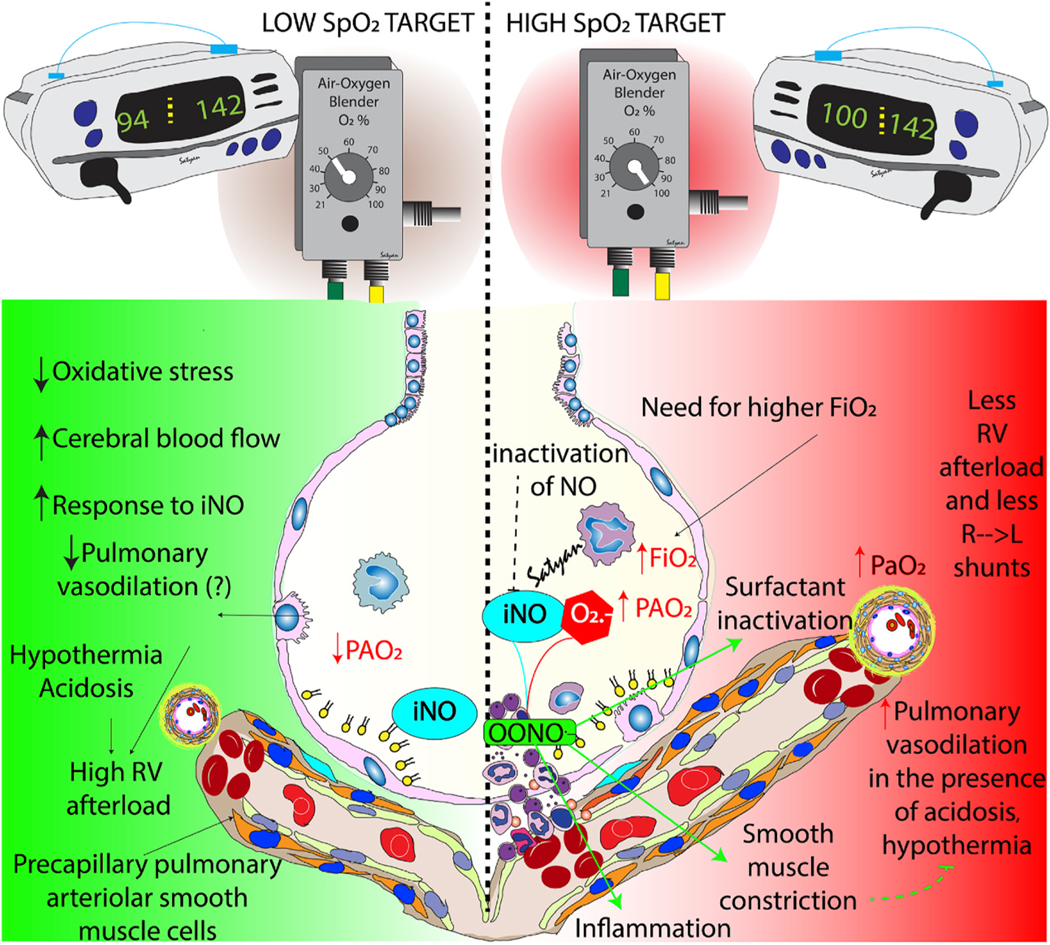Fig. 5.

Benefits and risks of low and high oxygen saturation by pulse oximeter (SpO2) targets. Preductal SpO2 in the mid-90s (90–97% - green zone) results in lower oxidative stress, increased cerebral blood flow and better response to inhaled nitric oxide (iNO). However, in the presence of hypothermia and acidosis, low SpO2 target may not be adequate to promote optimal pulmonary vasodilation resulting in high right ventricular afterload. High SpO2 targets (~100%) require higher inspired (FiO2) and alveolar (PAO2) increasing the risk of oxidative stress. Such targets may transiently improve pulmonary vasodilation especially in the presence of hypothermia or acidosis but there is a higher risk of reactive oxygen species formation leading to inactivation of inhaled nitric oxide (iNO), surfactant inactivation and inflammation. Copyright Satyan Lakshminrusimha.
